Most Magical Harry Potter Creatures
From the fearsome Basilisk to the misunderstood Thestral, the most magical Harry Potter creatures added life to the series.
When creating all of the magical Harry Potter creatures, J.K. Rowling drew inspiration from folklore and mythology. Most writers constructing a fictional universe (from J.R.R. Tolkien to George R.R. Martin) draw from reality. So, of course, Rowling had to base the Wizarding World on the real world – or, at least, the belief systems of the real world.
There are countless magical Harry Potter creatures – some being imposing figures of power, while others being symbols of humanity's best qualities – and all of them are worthy of discussion – where they come from, how Rowling's versions differ from folklore, and any other piece of interesting trivia worth noting.
Basilisks
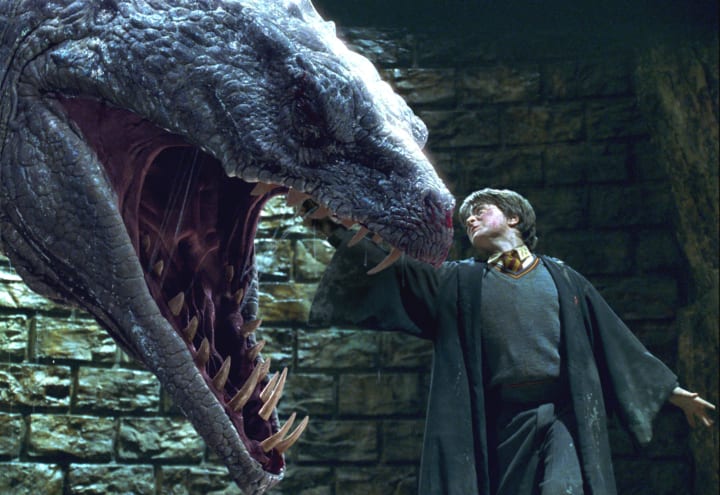
In Harry Potter and the Chamber of Secrets, the Heir of Slytherin, using the ability to talk to snakes (parseltongue) can summon the dreaded basilisk, a gargantuan serpent who dreads the cawing of the cock, has poison strong enough to kill a Horcrux, and can kill you with a glimpse (indirect eye contact results in petrification).
As with most magical Harry Potter creatures, the basilisk has a history in real mythology and folklore. The basilisk – along with its immediate cousin, the cockatrice – is awfully different from J.K. Rowling's interpretation of the creatures. The Wizarding World's basilisk is a gigantic snake that, in many respects, is reminiscent of the mythological Hydra. Harry fights it in a very wet environment (like Heracles's Hydra), and both are serpentine.
You'd be forgiven for thinking the King of Serpents actually looks like a serpent in folklore.
The basilisk from folklore barely resembled a snake. The mythological creature has a multitude of chicken legs and is only "fourteen fingers long." As in if you put 14 average-sized fingers together, you have the size of this magical creature. Not very scary, I admit.
Also, while being incredibly deadly, the basilisk can be killed just by having your cock crow at it. Hence the alternative name, the cockatrice. And yes, by cock I mean rooster.
Or, alternatively, a weasel could kill it.
Yeah, J.K.? You did good making this thing actually scary.
Acromantulas
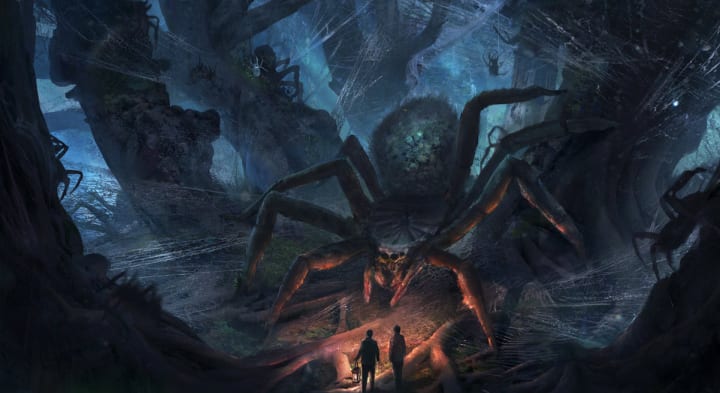
The acromantula is the name given to the gargantuan spiders in the Harry Potter Universe. Acromantula primarily appear in both Harry Potter and the Chamber of Secrets and Harry Potter and the Half-Blood Prince. The primary acromantula featured is Hagrid's companion, Aragog, who many confused for the monster hidden in the Chamber of Secrets (for some strange reason). Aragog, for the remainder of its lifespan, is taken care of by Hagrid, living, and breeding in the Forbidden Forest outside the outskirts of Hogwarts.
There is no one mythological comparison for this magical Harry Potter creature. There are a lot of scary spiders from folklore.
Comparisons can be drawn immediately to J.R.R. Tolkien, who, for many, was J.K. Rowling's fantasy rival when both The Lord of the Rings and Harry Potter movies started coming out.
In Tolkien's Middle-Earth series, there is Shelob, a gigantic, venomous spider who dwells in the wilderness outside of Mordor. Shelob, too, is kept as a pet – only, instead of the loving Hagrid, Shelob's master is the Dark Lord Sauron.
Of course, gigantic spiders are a universal source of dread for many, perhaps due to the common fear spiders inspire in so many – such as Harry Potter's close companion, Ron Weasley.
Werewolves
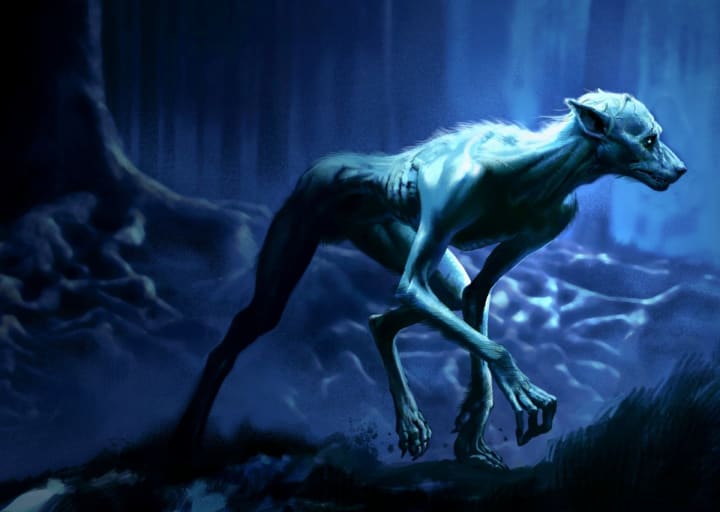
The werewolf is arguably the coolest magical creature in existence. Forget just being a magical Harry Potter creature. I squee whenever I see a werewolf in anything. They're just so bad-ass and awesome and –
Right. Wizarding World werewolves. Stay focused.
In Harry Potter and the Prisoner of Azkaban, we meet Remus Lupin, who it turns out was bitten by the werewolf Fenrir Greyback as a child. Lupin is a reluctant beast who doesn't want to hurt anyone – and, if I were to explain Lupin's extensive backstory in the Harry Potter Universe, I may as well recount most of the backstory in the series.
Werewolves, we learn, are typically tribal creatures who, either due to ostracization or a lack of shared experience, have disconnected from the rest of the Wizarding World. This is not dissimilar to other fictional depictions of werewolves.
In the popular horror film series The Howling, the werewolves form their own tribes apart from the rest of humanity, try to integrate with mainstream society, only to decide "Eh, it was more fun to just eat people."
What most people don't realize is that the werewolf of pop culture is a far more recent invention than you ever thought. Most of the common werewolf tropes (aversion to silver, transforms only from the full moon, uncontrollable rage) originate primarily in the 1941 film The Wolf Man, starring Lon Chaney Jr. If you haven't seen this horror classic, get on it. It's one of the best monster films ever made.
Before that, werewolves were like witches. They chose to gain powers by making deals with the devil, becoming all powerful and wicked in the process.
J.K. Rowling uses werewolves – in particular, Lupin – as a sort of metaphor for prejudice. Many compare it to either homophobia or the AIDS epidemic.
In terms of scary werewolves, however, the Wizarding World has it both ways. Like your werewolves sad, tragic, and tormented (like in The Wolf Man or American Werewolf in London)? Lupin. Like your werewolves bad-ass, merciless killers (like The Howling)? You have Fenrir Greyback.
Speaking of Fenrir, his name is the same from the mythical wolf Fenrir, who kills the Norse god Odin in the Battle of Ragnorak, similar to how Remus Lupin's name is Remus – from the founders of Rome, Romulus and Remus, both raised by wolves – and Lupin – which derives from the word Luna, or moon.
Seriously, how was anyone surprised when it turned out Lupin was a werewolf?
Boggarts
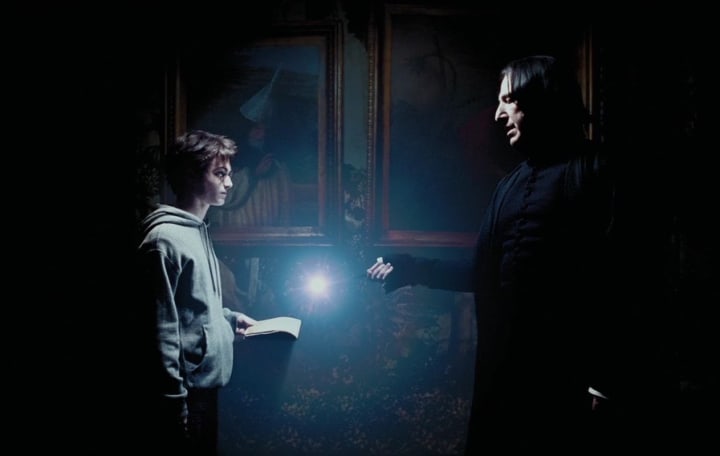
Of all the magical Harry Potter creatures, the boggart is the most enigmatic. No one knows what they look like, despite appearing throughout the Harry Potter book and film series (most notably in Harry Potter and the Prisoner of Azkaban).
The Boggart appears as whatever you fear most (used to great effect in Prisoner of Azkaban, when Harry uses them to practice against Dementor fighting, as well as in Harry Potter and the Order of the Phoenix, where we learn Molly Weasley fears losing any of her children).
While this magical Harry Potter creature may appear to be an obvious adaptation of the Boogeyman, the truth is that the boggart is an actual creature from folklore. There are household spirits – usually mischievous, but sometimes malevolent – who have no physical form, and, instead, change depending on the circumstances. To ward them off, you have to place a horseshoe or salt along your doorway.
English folklore treats boggarts more like pests than anything to be terrified of. They aren't friendly, but there are also far worse faye to worry about (including actual fairies).
And, yes, another name for boggart is a bogey. As in, the Boogeyman.
There's even a terrific 1993 children's novel called The Boggart by Susan Cooper that's worth reading if any talk of the boggart intrigues you. There's even a sequel to this book where – and I kid you not – it turns out that the Loch Ness Monster is, in fact, a boggart. I love fantasy books.
Centaurs
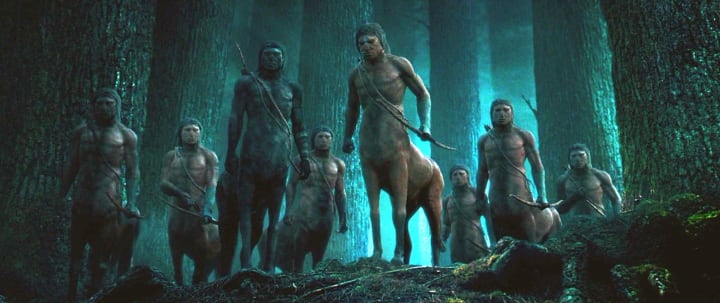
This magical Harry Potter creature appears throughout the entire Harry Potter series, though they remain most present in both Harry Potter and the Philosopher's Stone and Harry Potter and the Order of the Phoenix. Their first appearance shows them as star gazing half-men, half-horses ("Mars is bright tonight.") with names that derive from Roman and Greek cities.
However, in the fifth book, we also see their dangerous side, when everyone's favorite Harry Potter character Dolores Umbridge (I feel sick) calls them half-breeds.
All of this is very consistent with their mythological appearances. In Greek mythology, the centaur are a race of savage astrologers who are masterful at archery and the arts. They are children of Ixion and Nephele (a cloud shaped like the goddess Hera). One centaur, Chiron, served as a teacher to heroes (much like how Firenze ends up teaching students at Hogwarts).
Also, if you made them angry, they were fond of torture and rape. Like, vicious torture and rape. Maybe that's why J.K. Rowling didn't write what happened to Dolores Umbridge in those woods. Can you imagine? Us almost feeling bad for her?
Goblins
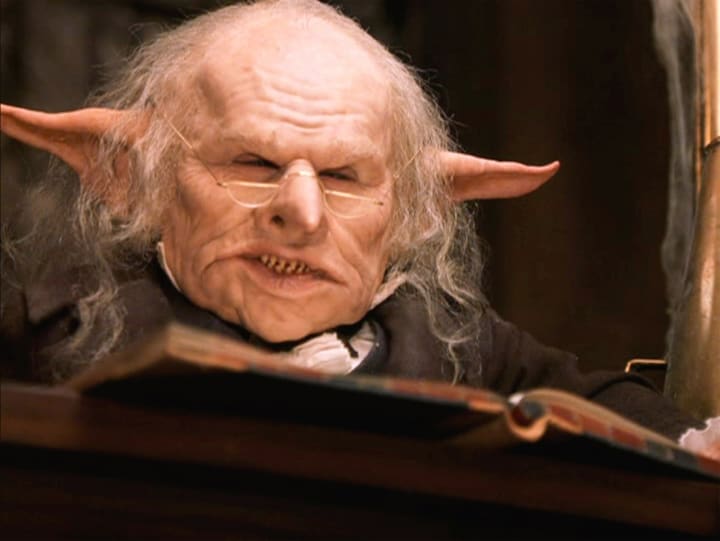
In the Wizarding World, these magical Harry Potter creatures manage the wizard bank of Gringotts. They are foul creatures, long nosed and greedy. They appear throughout the Harry Potter series, most notably in the first book, Harry Potter and the Philosopher's Stone, and the last book, Harry Potter and the Deathly Hallows.
Goblins have a history dating back to Medieval folklore. In the epic poem Beowulf, goblins and ogres (like Grendel) are said to be the offspring of Cain, the first murderer. They are a foul, humanoid race that dwells below the surface of the earth. Some folklore regards them as corrupt and evil faye, while others regard them as outright demons.
The point is that they are never good goblins.
The fact that, throughout the entire Harry Potter series, J.K. Rowling never features an overtly evil goblin is remarkable. Self-centered and greedy, yes, as we see with Griphook in Harry Potter and the Deathly Hallows, but you don't see too many goblins joining Voldemort's ranks.
Actually, that's one of the big differences between Voldemort and that other Dark Lord, Sauron. Many fans feel more than a little sympathetic toward Tolkien's goblins and orcs (which are interchangeable in Middle-Earth lore). Sauron takes these rejected races and gives them a chance to rebuild society.
The magical Harry Potter creatures end up running a bank, though, so maybe J.K. Rowling felt a little bad for goblins, too? Maybe?
Dragons
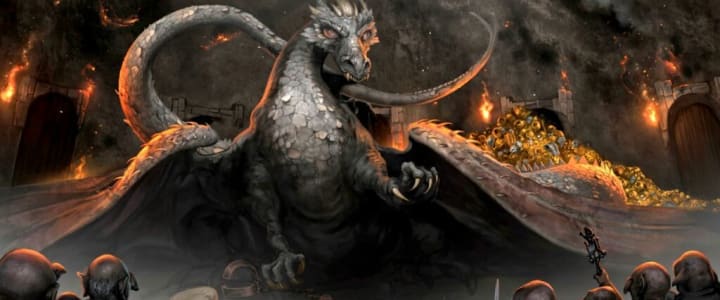
Dragons. Oh God, dragons. The magical Harry Potter creatures are among the most incredible, awesome creatures in the whole series – though, oddly enough, they really only play a small role in the lore.
There's Norbert in Harry Potter and the Philosopher's Stone, who Hagrid raises for a few weeks before having to send it off to Ron's brother Charlie in Romania. There's the dreaded Hungarian Horntail that Harry faces off against in the Tri-Wizard Tournament from Harry Potter and the Goblet of Fire. And there's that epic escape from Gringotts atop a dragon in Harry Potter and the Deathly Hallows.
Dragons are omnipresent in fantasy and folklore. Every religion and mythology has at least one. Most often, as the ultimate adversary.
Norse mythology tells of Nidhogg, a dragon that eats at the roots of the World Tree Yggdrasil. Heracles faces off the terrible Hydra. Fafnir the Dragon fought against the hero Siegfried, and, upon bleeding upon the hero, granted Siegfried the ability to speak to the creatures of the Earth. Beowulf is slain by a dragon. Satan takes the form of a seven-headed dragon accompanied by various demons in the Book of Revelation.
And, of course, at the end of The Hobbit, Bilbo Baggins comes face-to-face with Smaug.
But dragons are not all evil. Many Eastern dragons represent good luck and the good of the Earth. They are magic and grand. Not evil or greedy. Popular fantasy series like Ursula le Guin's Earthsea Cycle and Anne McCaffrey's Dragonriders of Pern series depict dragons in a sympathetic light. And of course, we can't forget about the Mother of Dragons. Daenerys' "children" may be fearsome, but they are also faithful and even loving to their mother.
But, for such epic creatures, you'd assume someone (like, say, Charlie) would bring in about a hundred or so dragons down upon the Death Eaters and Voldemort. Imagine that! Problem solved! Hell, it's proven that dragon fire can kill a Horcrux, so why didn't Harry just try to train a dragon, and just ride along on top of one the whole way?
In terms of all the magical Harry Potter creatures, dragons, while grand, always felt a little underutilized.
Thestrals
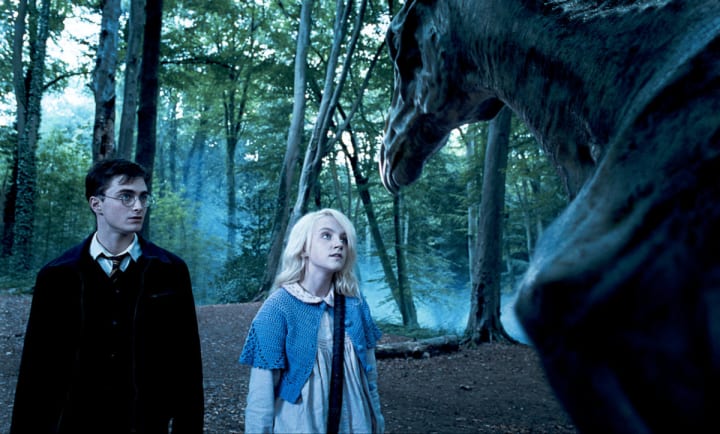
Thestrals appear late in the Harry Potter series, thanks to their nature. Thestrals are visible only to those who have seen a person die. Naturally, it isn't until Cedric Diggory dies in Harry Potter and the Goblet of Fire that Harry can see them, and, even then, he doesn't know what they are until Hagrid's Care of Magical Creatures class in Harry Potter and the Order of the Phoenix explains what they are.
Thestrals carry the carriages from the Hogwarts Express to Hogwarts Castle. They also end up flying Harry and friends to the Ministry of Magic at the end of Order of the Phoenix.
Furthermore, the Elder Wand, wielded by Dumbledore and Voldemort, possesses a core of a Thestral hair.
Thestrals are original creatures. J.K. Rowling drew from folklore throughout the Harry Potter series, but these creatures are actually her own creations. The appearance of the thestral – a bony horse with bat wing – is fairly similar to many other winged horse creatures, such as the cryptoid the Jersey Devil. But, even then, these comparisons are fairly forced. Like Dementors, J.K. Rowling made these entirely.
Which makes them even more unique, considering how often Rowling draws from folklore for her fictional universe.
Cornish Pixies
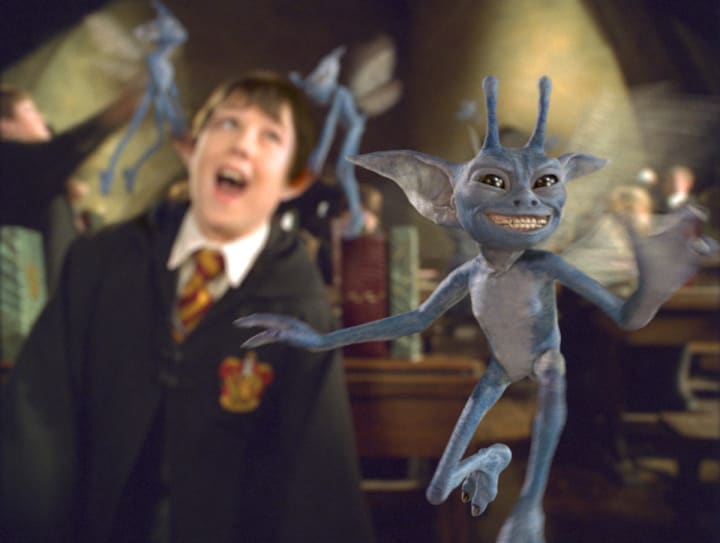
The Cornish Pixie is a mischievous magical Harry Potter creature. They primarily appear in one book: Harry Potter and the Chamber of Secrets. Everyone's favorite Defense Against the Dark Arts teacher, Gilderoy Lockhart, unleashes a load of them in his first class, but, because he's a colossal idiot, has to rely on his children to stop them.
The pixie is a mischievous faye from English, Scottish, and Irish folklore. While the details vary from account to account, the universal thing all pixies have in common is that they love playing tricks and pranks. Some of these pranks are harmless.
Others are lethal.
The fair folk, in general, are not the sort of creatures you want to mess with. Pixies are fond of taking people into their fairy circles, and, after having a huge party and dance, let those ensnared go after decades have passed.
So we're either lucky or unfortunate the pixies didn't take Voldemort away for a dance for a good century or two.
Hippogriffs
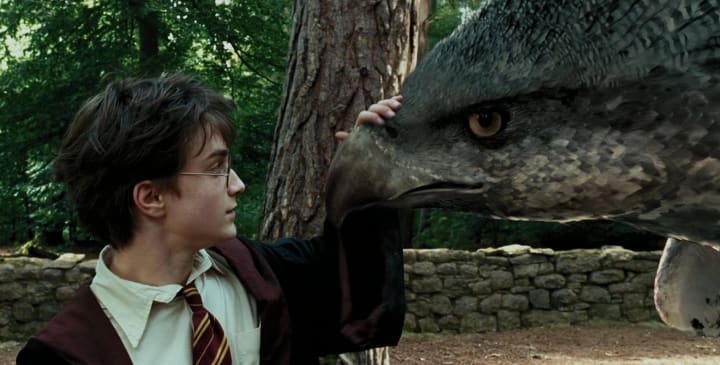
Magical Harry Potter creatures don't get cooler than the hippogriff. Almost all of Harry Potter and the Prisoner of Azkaban is devoted to Buckbeak the Hippogriff, a creature who, thanks to Draco Malfoy, is being put to death. Afterward, Buckbeak can be seen palling around Sirius Black, and, later, Hagrid.
This may surprise people, but this is one magical creature that does, in fact, exist in real lore. In European folklore, the hippogriff is what happens when a Griffin breeds with a horse. In many respects, it's like a mule. A hybrid creature, infertile yet all powerful.
The first mention of a hippogriff was made by the poet Virgil, though, toward the 16th century, the hippogriff became a symbol of nobility and chastity. Paladins and Holy knights rode the Hippogriff into battle, as a symbol of their goodness and purity.
Perhaps that's why Harry Potter and Sirius ride Buckbeak. They're essentially good people out fighting evil. Though I'd be hard-pressed to refer to either of them as "paladins," either.
House-Elves
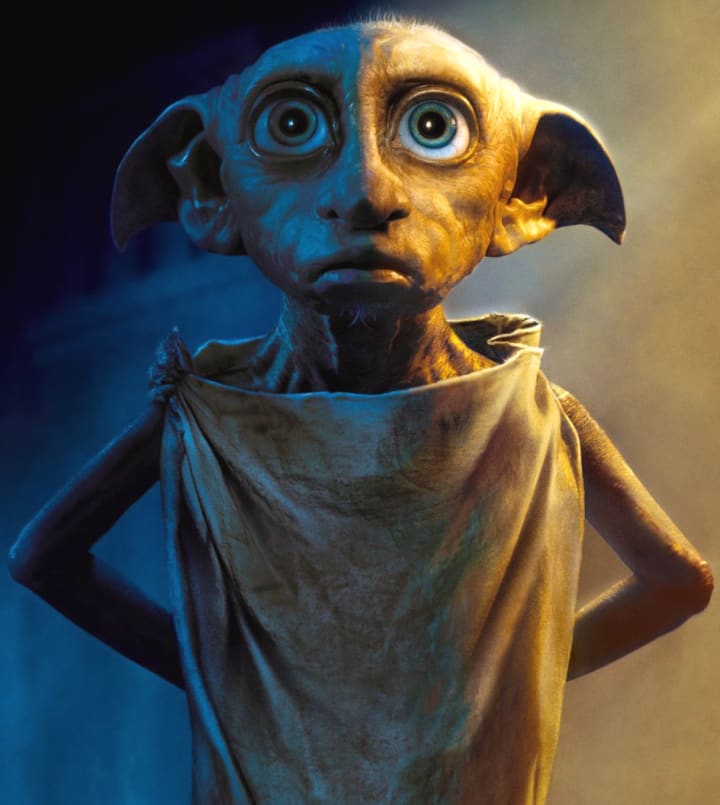
House-elves appear throughout the entire Harry Potter series. Dobby is, of course, the most noteworthy, but there's also Kreacher and Winky. The house-elf is a race of creatures who love serving witches and wizards. They find purpose in serving others, though, like anyone, if you mistreat them, they might strike back (as seen with both Dobby against the Malfoys and Kreacher against Sirius Black). They are dismissed when presented with clothes.
While many modern audiences are more familiar with Tolkien's elves and Nintendo's Hyrulians, elves have not always been tall, beautiful, ageless creatures. Most European folklore presents elves as short, squat creatures who are both magical but also very odd. They follow a set of rules that may seem illogical to mortals, but that's just their set of customs.
J.K. Rowling clearly ignored Tolkien's popular depiction of elves in order to draw directly from classic European folklore. Short, squat, yet very magical and clever creatures, classic elves are the sort of creatures who may fix shoes or serve Santa Claus. Unlike the modern depiction of these creatures, classic elves are, in many respects, subservient (with a catch).
Of course, like with other fae, elves are incredibly dangerous. You don't mess with this creature.
Cerberus
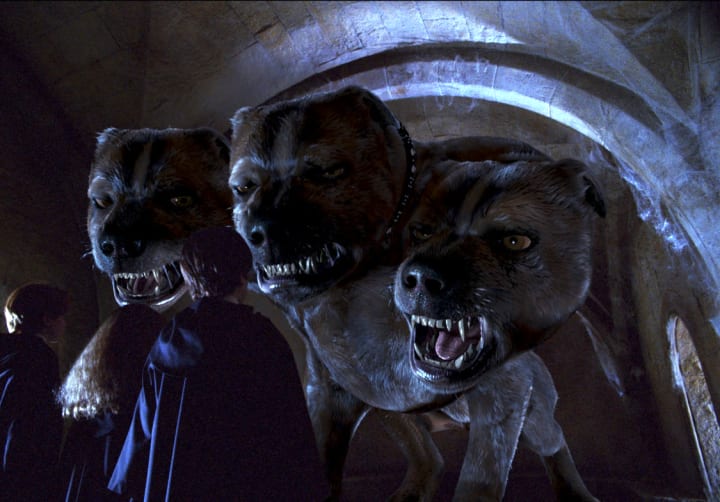
One of the first magical creatures Harry and crew encounter, the three-headed dog Fluffy guards the entrance to a maze containing the Philosopher's Stone (and yes, it is the Philosopher's Stone, not the Sorcerer's Stone). Play Fluffy some music, and it'll fall asleep.
While it is never called Cerberus in any of J.K. Rowling's Harry Potter books, the Wizarding World's three-headed dog is clearly inspired by the gatekeeper to the Underworld, Cerberus.
Cerberus is a terrifying beast that even the gods fear. Only Heracles could drag the beast to the surface world. All others? Well, it's a three-headed dog. This puppy will wreck you.
Like many mythological creatures, European folklore drew from it. Dante Aligheri, most notably, stated that Cerberus guards the Gates of Hell in his epic poem The Inferno.
Cerberus is sometimes described as being monstrous, with a dragon's tail or the ability to breathe fire. Yet the core of the creature – a three-headed, fearsome doggy – never changes. Of all the magical Harry Potter creatures, Cerberus remains unforgettable.
About the Creator
Miranda O'Conner
Body positive blogger, freelance sculpture, self-proclaimed connoisseur of whiskey, and forever in search of a hamburger as delicious as the ones you see in food commercials. Wendy's just doesn’t cut it.






Comments
There are no comments for this story
Be the first to respond and start the conversation.